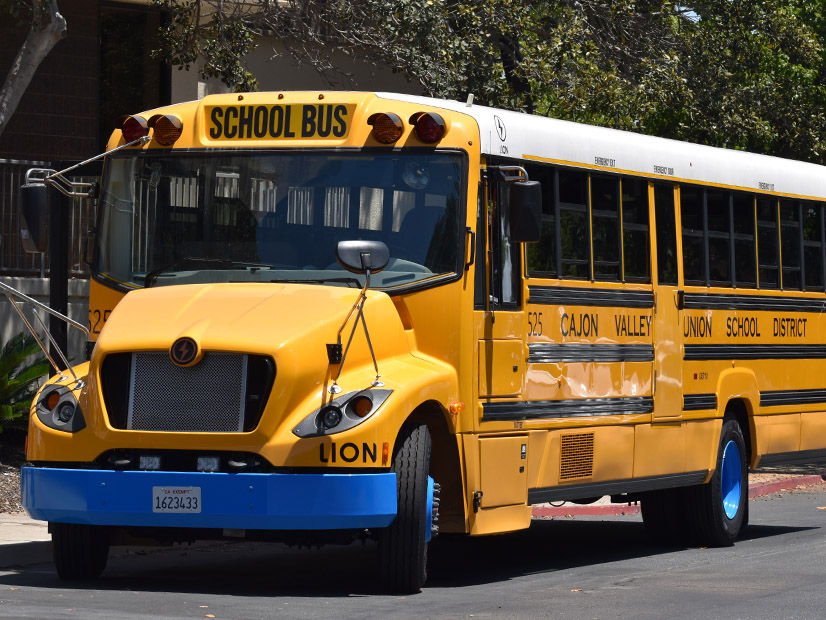
The California Air Resources Board (CARB) is now taking applications for $150 million in state funding to help public school districts buy zero-emission buses and related infrastructure.
In announcing the funding round on Friday, the agency said recipients can get up to $395,000 to replace fossil fuel-powered buses with zero-emission models, as well as $100,000 per bus to acquire and install necessary charging equipment. Winners of the awards are required to scrap an old bus for every new vehicle purchased.
This marks the second year CARB is making money available under the state’s Hybrid and Zero-Emission Truck and Bus Voucher Incentive Project (HVIP) Public School Bus Set-Aside program, which last year helped 81 school districts buy 300 zero-emission buses, according to CARB.
“Zero-emission school buses play a key role in California’s efforts to achieve carbon neutrality [by] 2045 and help protect children who are particularly vulnerable to the health impacts from diesel exhaust,” the agency said in a statement.
CARB is partnering with the California Energy Commission’s Energy Infrastructure Incentives for Zero-Emission Commercial Vehicles Project (EnergIIZE) to help fund the charging infrastructure, which can include vehicle-to-grid (V2G) hook-ups that allow bus batteries to transmit energy back to the electricity grid to meet peak demand. California’s largest utility, Pacific Gas and Electric, last year received regulatory approval to establish the nation’s first V2G export rates for commercial electric vehicles, including school buses. (See PG&E to Offer Nation’s First V2G Export Rate.)
According to the U.S. Department of Energy, the average price of a large “Type D” electric school bus is $400,000, compared with $200,000-$250,000 for an equivalent diesel bus. Charger costs can range from $596 per port for a low-power dual-port Level 1 station to $140,000 for a 350-kW single-port DC fast charger. School districts expect to see significant savings from lower fuel and maintenance costs for electric buses.
This HVIP set-aside funding will be available to public school districts, public charter schools, joint power authorities, county offices of education and the California Department of Education’s Division of State Special Schools. Applicants must be in small- or medium-sized air districts — the state entities responsible for regional air quality planning and monitoring.
“The program prioritizes applicants located in low-income and disadvantaged communities in small and medium air districts that have historically had limited access to funding for investments in zero-emission transportation,” CARB said.
CARB will accept applications for the program until Sept. 29. Applicants must submit a letter of intent, a copy of the vehicle registrations for the buses they intend to replace and “preliminary information regarding existing and planned charging infrastructure.”


